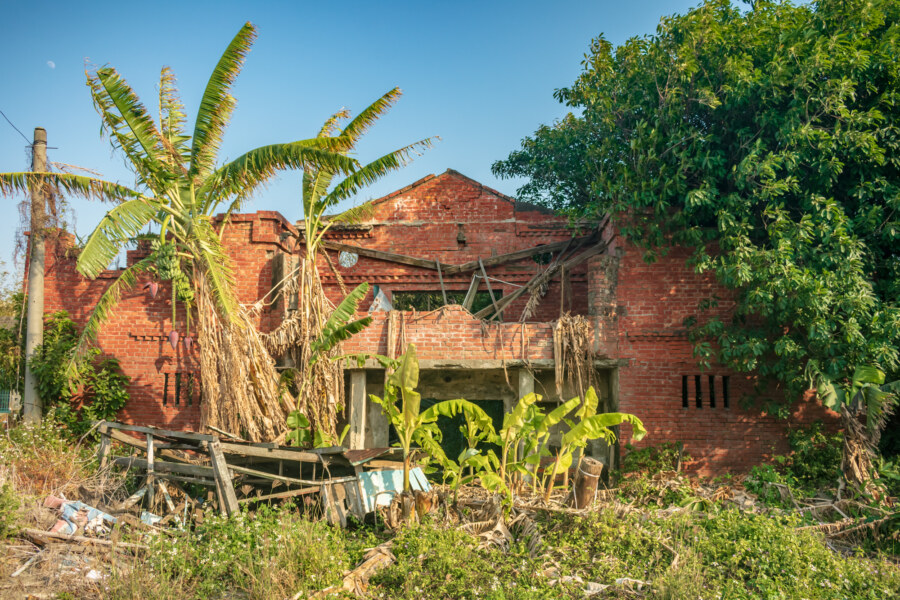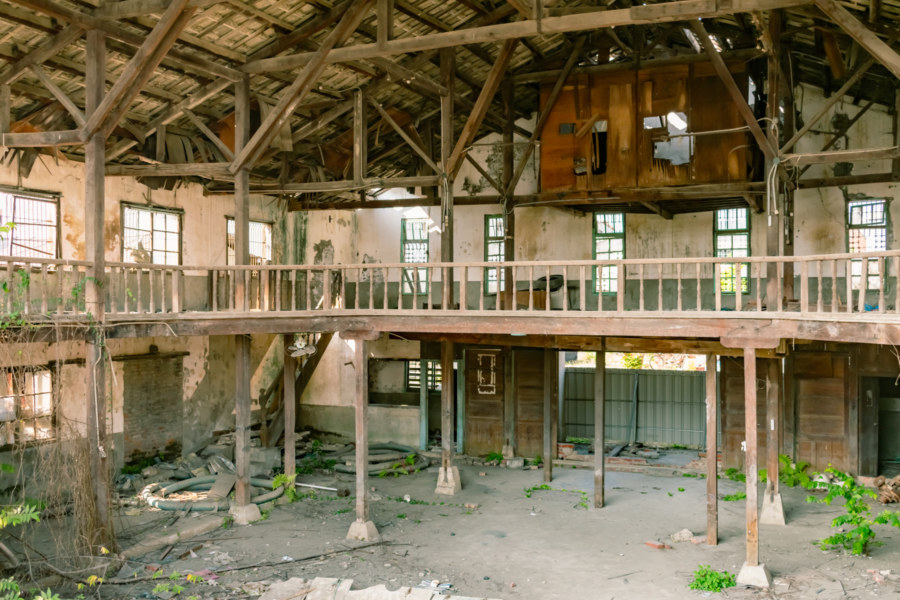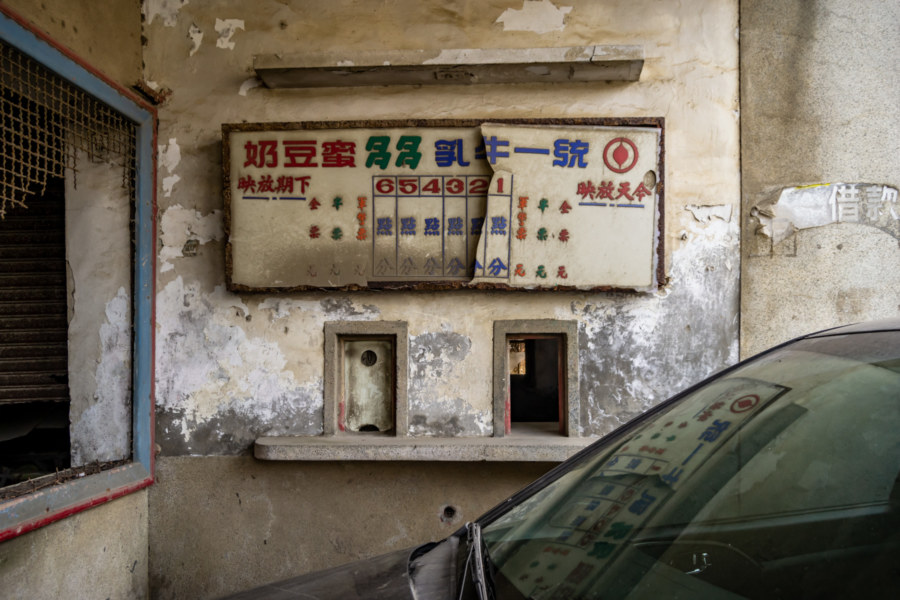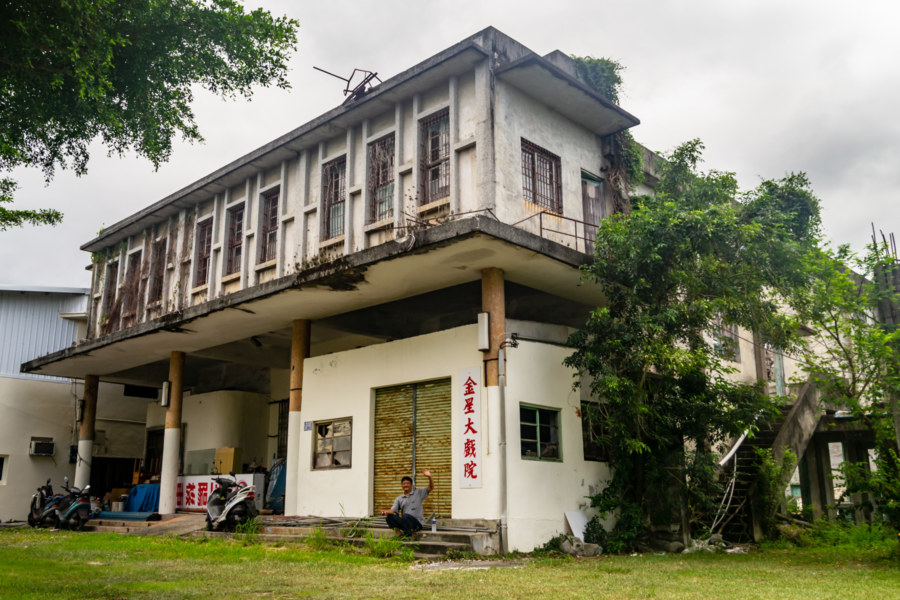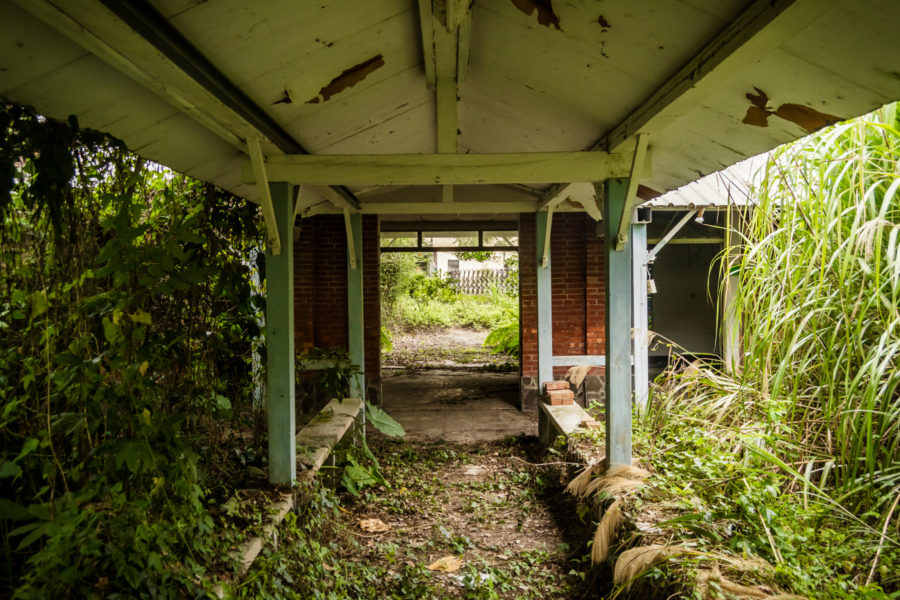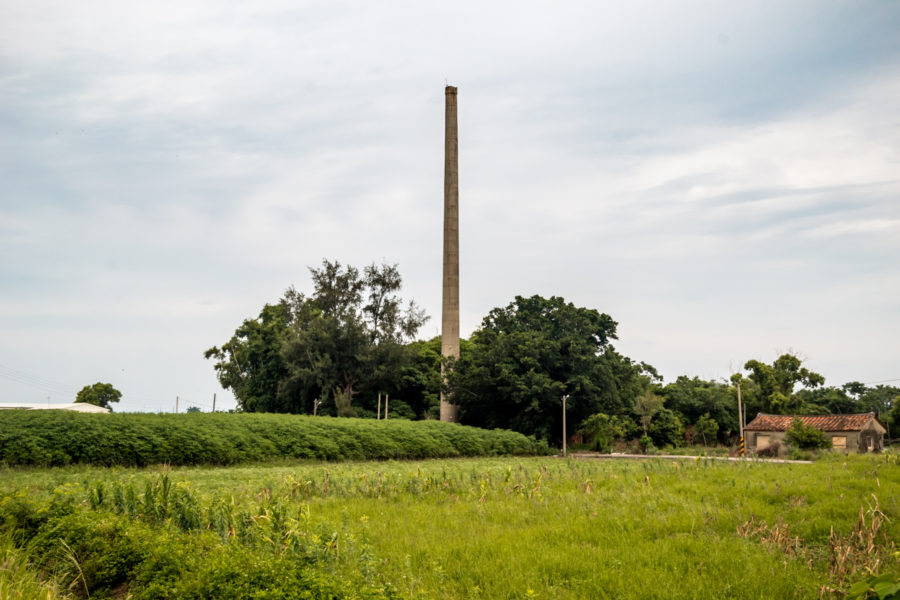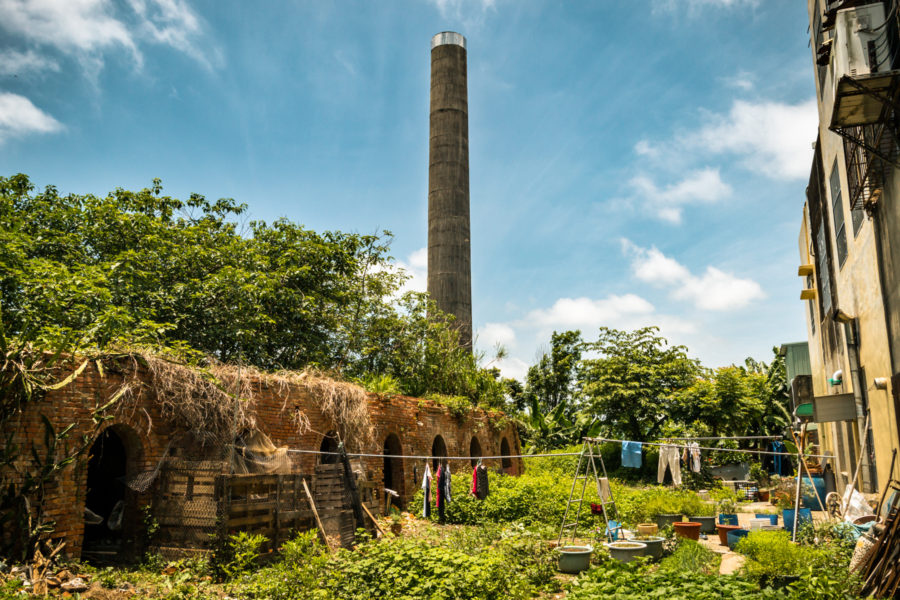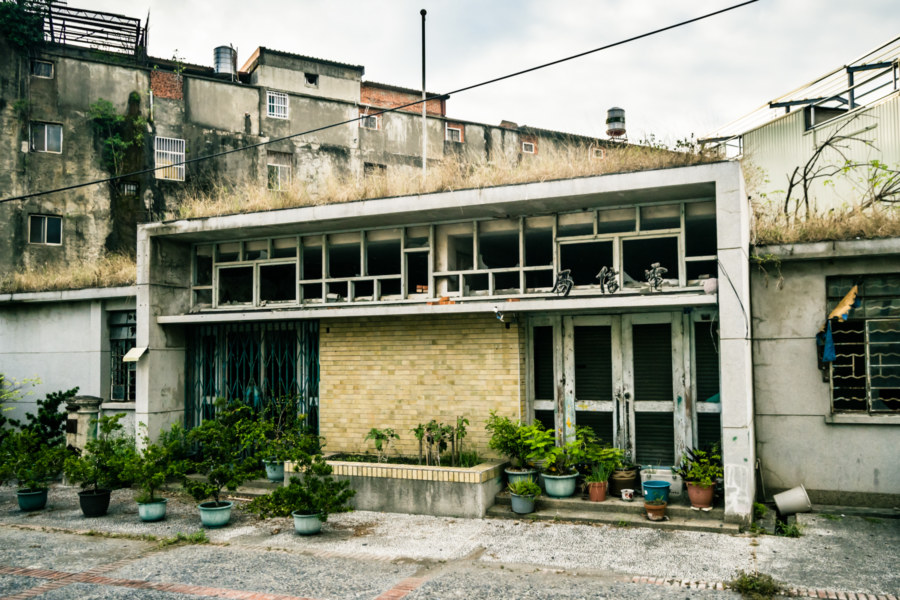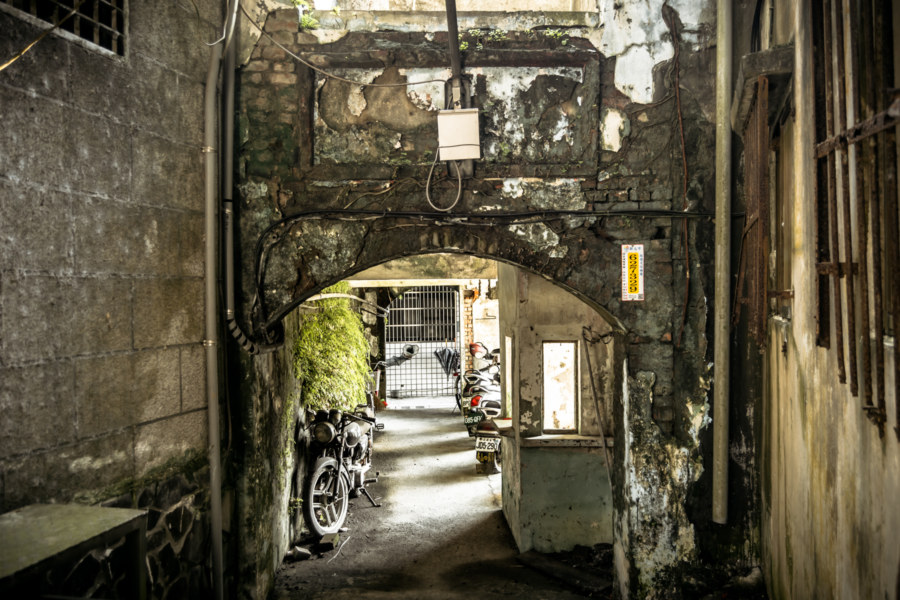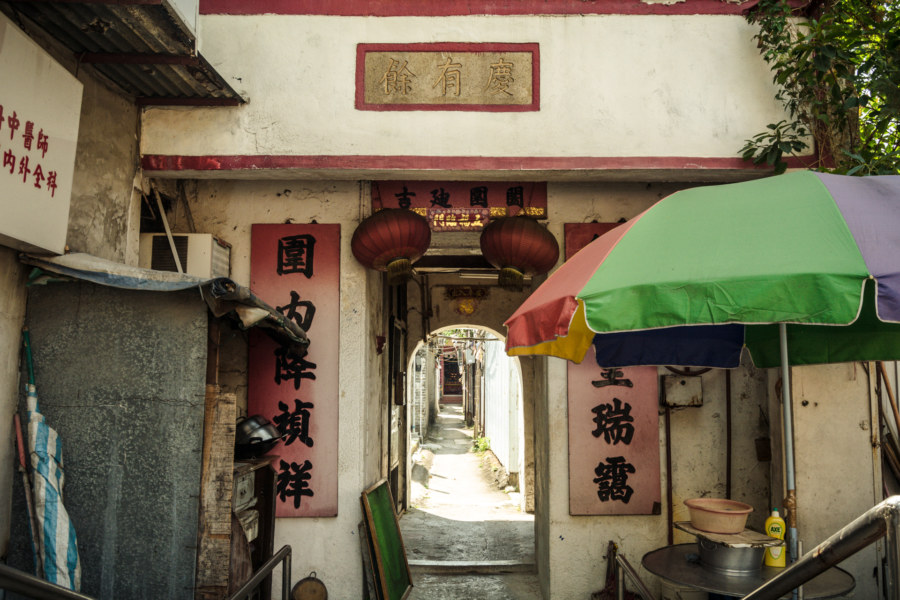The overgrown ruins of Kǒuhú Theater (口湖戲院) can be found along a dusty country road on the outskirts of Kouhu, a desolate town in coastal Yunlin, at the westernmost extent of the Taiwanese mainland. Its most distinct feature is the exposed red brick facade, which might be unique among those vintage theaters still standing in earthquake-prone Taiwan. Not much is written about this old theater online, possibly due to its obscure location in the remote countryside, but it dates back to the early 1950s and likely remained in operation into the early 1980s.
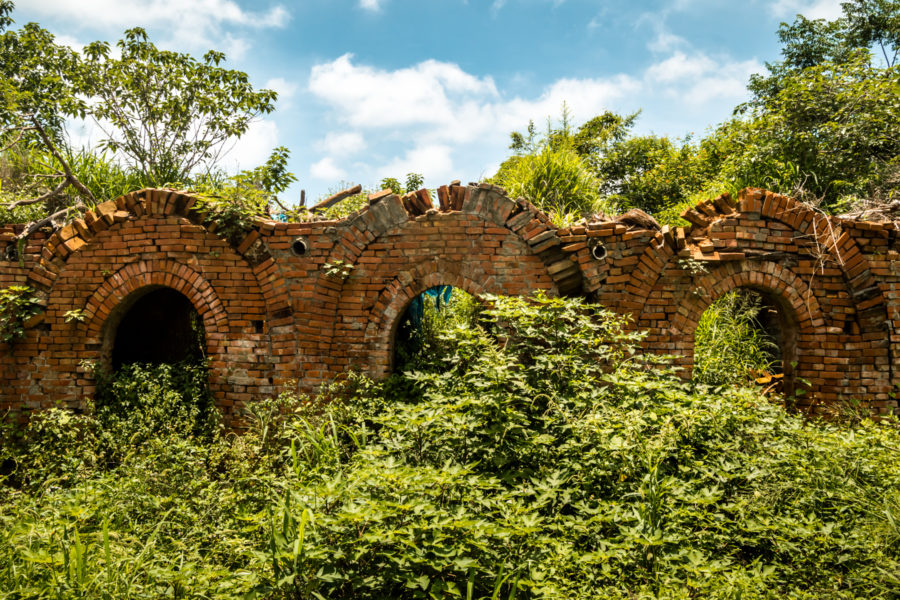
The rewilding is the process by which nature reclaims the works of humankind. I apply this term to any of my posts that feature abandoned places with vegetation growing out of the ruins.
Adjacent Terms
Ruimao Theater 瑞茂戲院
Ruìmào Theater (瑞茂戲院) is an old wooden theater hidden in the winding laneways of Guògōu (過溝), a small fishing and farming village in remote coastal Chiayi, Taiwan. Nobody seems to know exactly when this theater was established, although there is general agreement it likely dates back to the early post-war era. Remarkably, it was one of two theaters in this settlement, and one of maybe a dozen along this stretch of coast in the 1970s, when salt production and oyster farming buoyed the local economy. As with most other theaters of its vintage, this one closed sometime in the 1980s.
Mailiao Jincheng Theater 麥寮金城戲院
Jīnchéng Theater 金城戲院 is located in Mailiao, a rural township in northwestern Yunlin, Taiwan. This theater is something of a cypher; it was reputedly built in 1965, but may have only opened in 1968, and business records record only one transaction in 1975. It probably closed in the late 1980s or very early 1990s, a casualty of changing consumer habits and population outflow to larger urban centers. Beyond that, not much is known about this hulking monster of a theater, which may have accommodated something like 800 patrons at its peak.
Jinxing Theater 金星大戲院
Jīnxīng Theater 金星大戲院 is located in the small town of Zhīběn 知本 on the southern outskirts of Taitung City, Taitung, in southeastern Taiwan. Zhiben is home to the Katipul group 卡地布部落 of the Puyuma people 卑南族, one of Taiwan’s recognized Indigenous groups, but this theater was constructed in 1967 to cater to the many KMT veterans who settled here after the completion of the Central Cross-Island Highway 中部橫貫公路. Named after Venus (literally “Golden Star” in Chinese), it went out of business shortly after it was sold to a lumber company in 1980 and has been abandoned ever since.
Puli Tuberculosis Sanatorium 埔里肺結核療養所
Tuberculosis remains the deadliest communicable disease in Taiwan, claiming approximately 600 lives per year, but great strides have been made in reducing its toll throughout the 20th century. Nearly 5% of the population were afflicted by the disease in the late 1940s—and with an annual mortality rate of 3 in 1,000, it was also among the leading causes of death of any kind in post-war Taiwan. The disease was especially prevalent among the Taiwanese Indigenous people of the remote mountainous interior, who simply couldn’t afford to see a doctor or purchase medicine (even if there were a clinic anywhere nearby).
Christian missionary organizations went to great lengths to expand access to medical services in the late 1950s, founding numerous clinics and sanatoriums in Indigenous territory all across Taiwan. In 1957 this particular tuberculosis sanatorium was constructed next to a secluded lake on the outskirts of Puli, Nantou, to provide free treatment and relief for people of the mountains. The next several decades saw great advances in healthcare in Taiwan and the sanatorium closed in 1980, its purpose fulfilled. It reopened as a Presbyterian retreat center and campground in the late 1980s and was ultimately abandoned to the elements sometime in recent years.
Shuangxikou Brick Kiln 雙溪口磚窯
Recently I wrote about the Liùjiǎo Brick Kiln 六腳磚窯, an obscure abandonment in rural Chiayi, Taiwan. While attempting to find out more about that kiln I found a reference to a second abandoned kiln in the area, the Shuāngxīkǒu Brick Kiln 雙溪口磚窯, informally named after the closest village in neighboring Puzi. Weeks after visiting the first kiln I returned to scope out the second and—insofar as I can tell—only other remaining brick kiln in this expanse of the Chianan Plain 嘉南平原. It was a hazy, grey day out there so these photos aren’t nearly as nice as those of the other kiln, but in the interest of adding a little something to the historic record I’m sharing them here anyway.
Liujiao Brick Kiln 六腳磚窯
Liùjiǎo Brick Kiln 六腳磚窯 was an unexpected discovery while riding from Beigang to Puzi earlier this summer. The chimney is plainly visible from the roadside and the crumbling bulk of the kiln can be discerned in a gap between the row of houses out front. Stopping to take a closer look I went around (and through) the old kiln to document what remains. Liujiao is a rather obscure part of rural Chiayi so I’ve not found any mention of this place online apart from this brief post. Whereas several kilns in various other parts of Taiwan are being preserved this obscure ruin is almost certainly never going to be the object of a conservation effort.
Xizhou Telecom Bureau 溪州原電信局
This week I visited the small town of Xizhou in southern Changhua to locate the eponymous Xizhou Theater. I found no way into the theater but made a serendipitous discovery while walking around the block in search of another access point. Across the street I noticed the utilitarian outline of the former Xizhou Telecom Bureau (溪州原電信局), a modest building that once housed a combined post office and service counter for the state phone company, then known as the [Directorate General of Telecommunications (交通部電信總局). The sign above the entrance simply reads Diànxìnjú (電信局), or “telecommunications bureau”, which is all anyone needed to know in those days. Taiwan’s telecom monopoly was broken up in 1996 with the privatization of what became known as Chunghwa Telecom (中華電信). In the absence of any sort of historic information about this obscure abandoned office I’d guess it was built sometime in the late 1970s or early 1980s.
Shuangxi Donghe Theater 雙溪東和戲院
Dōnghé Theater 東和戲院 is an obscure ruin in Shuangxi, a former mining town of approximately 8,000 residents in the mountains of eastern New Taipei. Despite its diminutive size and relatively remote location, Shuangxi has a colorful history extending back to the late Qing dynasty era. Its prime location at the confluence of Mudan Creek and the eponymous Shuang River made it an ideal transshipment point for people and goods traveling to and from Ruifang. The surrounding hills also contained rich deposits of gold and coal deposits, sparking a mining boom that peaked in the mid-20th century with dozens of mines and more than 30,000 miners in the area. Two theaters were in business in the 1950s, but the local entertainment industries declined along with the mining industry, and only the ruins of Donghe Theater remain to provide a glimpse into the past. Although it isn’t formally protected, the site has been tidied up and anyone is welcome to wander in and take a look.
Nga Tsin Wai: The Last Walled Village of Kowloon
Nga Tsin Wai Village 衙前圍村 is widely known as the last walled village of Kowloon. Located not far from the former location of the infamous Kowloon Walled City 九龍城寨, the village traces its history back to the 1352 founding of its modest Tin Hau Temple 天后宮. It was fortified in 1724 to defend against bandits and pirates but has, in modern times, lost the moat, walls, and watchtowers that once protected residents from harm. As the very last of its kind in the urban heart of Hong Kong it has become a flashpoint for conflict between the Urban Renewal Authority and the many activist groups and citizens passionate about preserving what remains of Kowloon’s cultural heritage.
